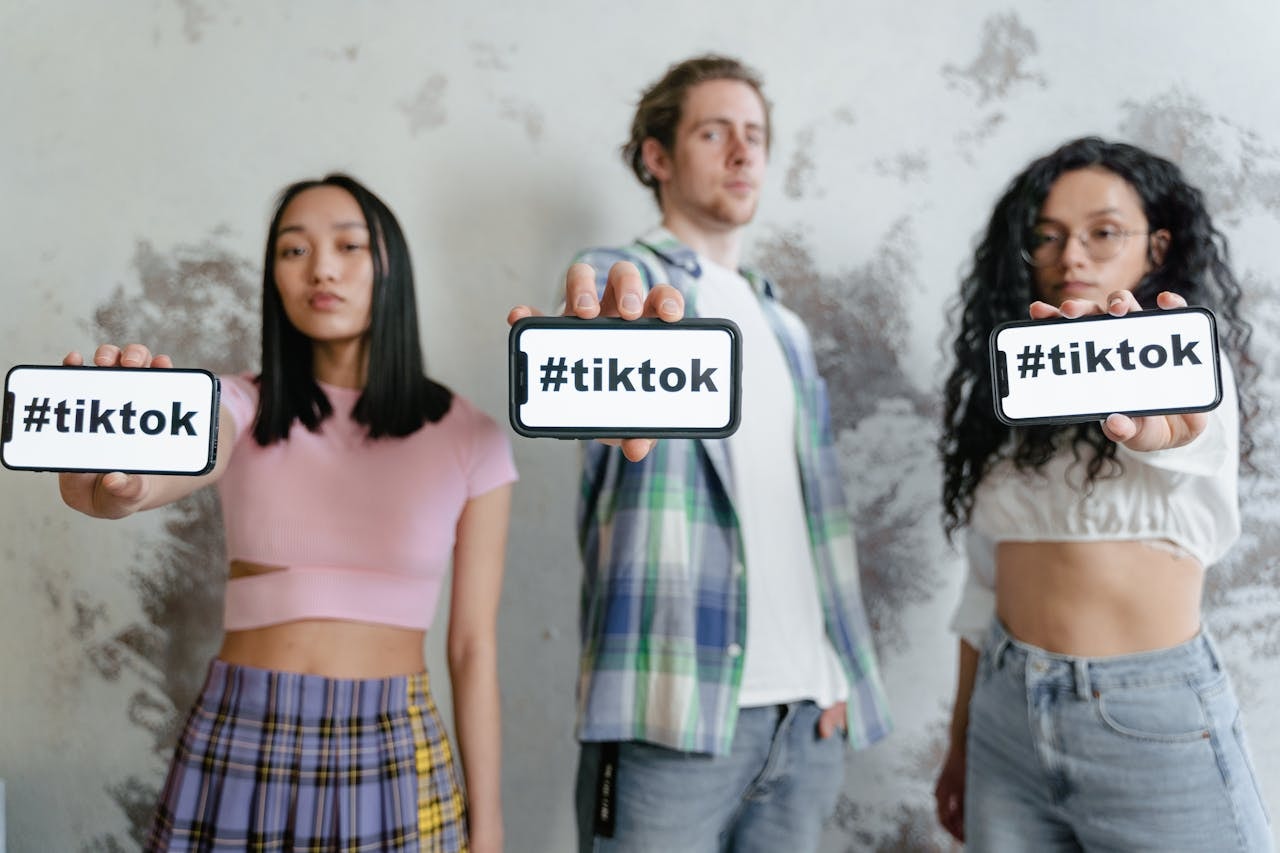
Introduction
Welcome to the fast-paced world of social media in 2025, where algorithms change like Melbourne weather and brands are made or broken with a scroll. Whether you’re a cafe in Carlton, a freelancer in Fremantle, or a boutique in Byron Bay, you need a winning social media strategy that doesn’t just shout into the void but engages, converts, and builds loyalty.
Why is this guide so important? Because crafting an effective social media marketing strategy isn’t just about chucking a few hashtags on a pretty pic. It’s about creating a roadmap that connects your business goals with the hearts and minds of your target audience—all while navigating a digital landscape that’s noisier, faster, and more competitive than ever.
We’re living in a time when social media marketers see platforms as not just marketing tools but mission-critical assets for business growth. From building community and driving website traffic to improving customer engagement and increasing brand awareness, social media can do a lot—if done right.
And here’s the kicker: Australia has one of the highest rates of social media usage per capita. With over 21 million active users, there’s never been a better time to refine your social strategy, tap into social listening, and show up where it matters most.
In this expert guide, we break down how to build an effective content creation strategy that aligns with your broader business objectives, attracts your target audience, and boosts your social media presence across multiple platforms. Whether you’re managing it solo or with a team of social media managers, this is your one-stop resource to make sense of the chaos and turn your social into a strategic powerhouse.
Buckle up, grab your favourite coffee (flat white, anyone?), and let’s dive into the tactics that will drive social media success for your Aussie startup.
What Is a Social Media Strategy?
A social media strategy is a comprehensive, action-oriented plan that details how your brand will engage, influence, and grow through various social media channels. It’s your playbook—a fusion of your brand strategy, marketing objectives, and social media marketing communication framework—all built to strengthen your social presence and deliver measurable results.
This isn’t about winging it with random posts or chasing trends for vanity metrics. A well-crafted social media strategy ensures that every story, status update, or Reel you share is part of a bigger picture—designed to support business objectives, build trust, and spark customer engagement.
A robust social networks marketing strategy serves multiple purposes:
- It defines your target audience and tailors messages to their needs.
- It outlines the social media platforms that best match your brand.
- It clarifies your content strategy—what you’ll post, when, and why.
- It establishes key performance indicators (KPIs) to track your efforts.
- It ties your content back to broader business objectives like lead generation, sales growth, or enhanced brand reputation.
Think of it as your North Star in the sometimes chaotic social space. Whether you’re aiming to boost brand awareness, launch a new product, or nurture a loyal community, your social media strategy is what helps you stay aligned and agile.
Moreover, an own social media strategy empowers your brand to:
- Cut through the noise with a consistent brand voice
- Provide meaningful value through educational content and storytelling
- Leverage user generated content and influencer collaborations
- Adapt to platform updates and shifting audience behavior shifts
In short, a successful social media strategy doesn’t just make you visible. It makes you memorable. And in today’s hyper-connected digital ecosystem, that could be the difference between growing a loyal tribe—or getting lost in the scroll.
Why Social Media Marketing Matters More Than Ever
Social media is no longer just a nice-to-have—it’s a necessity. In 2025, social media marketing has become the cornerstone of digital communication for businesses of all shapes and sizes. Why? Because today’s consumers are more digitally savvy than ever, and they’re spending more time on social networks than on traditional channels like TV or print.
From the moment your customers wake up and check their feed, to when they’re unwinding at night with TikTok or LinkedIn, they’re engaging with brands—consciously or not. That’s where your business needs to be. Present, strategic, and consistent.
Here’s what makes social media marketing a non-negotiable part of your brand’s playbook:
1. It Builds Authentic Relationships
Unlike traditional ads, social allows you to talk with people—not at them. It humanises your brand, builds trust, and allows for real-time interaction. Social customer service can turn a complaint into a glowing review if handled correctly.
2. It Drives Business Results
A well-executed social marketing strategy doesn’t just look good—it delivers results. Whether it’s increasing website traffic, nurturing leads to generate leads , or converting followers into buyers, social plays a direct role in your business objectives.
3. It Offers Real-Time Insights
Tools like Meta Business Suite, Sprout Social, and Google Analytics let you access valuable insights into what your target audience loves, shares, skips, or comments on. This data informs your content calendar, helps you create more engaging content, and improves performance.
4. It Boosts Visibility and Reach
The right content, at the right time, on the right platform? That’s a recipe for viral success. The best brands don’t just chase trends—they set them. With strategic content creation and a data-informed approach, you can reach thousands—even millions—without a massive ad budget.
5. It Levels the Playing Field
Whether you’re a solo entrepreneur or a startup with five staff, social media platforms give you a voice as loud as the big players—if you use them wisely. And with the growth of user generated content, you don’t even need a huge creative team to look like a pro.
In essence, the businesses that win in the social space are the ones that show up with audience research purpose, plan with insight, and execute with consistency. And now more than ever, your audience expects you to be there—not just selling, but listening, educating, entertaining, and building community.
Set SMART Social Media Goals
Before you post, boost, or build, you need a solid framework for success. That’s where SMART goals come in—a tried-and-tested approach that ensures your social media marketing goals are not only clear but achievable.
SMART stands for boosting your follower count in targeted ways :
- Specific
- Measurable
- Achievable
- Relevant
- Time-bound
Each of your goals should meet these five criteria. Let’s break them down:
Specific
Your goal should clearly state what you want to achieve and on which social media channels. Ambiguity leads to vague results. Instead of saying, “I want more followers,” say, “I want to grow our Instagram follower count by targeting Australian millennial entrepreneurs.”
Measurable
If you can’t measure it, you can’t manage it. Use social media metrics and key performance indicators (KPIs) like engagement rate, link clicks, reach, and conversions to track progress. For example: “Increase Facebook page engagement by 20% within 60 days.”
Achievable
Your goals should stretch you, but not break you. Can your two-person social media team realistically hit that milestone while managing other priorities? If you currently get 5 leads per month from LinkedIn, targeting 10 is ambitious yet attainable; 1,000 is probably not.
Relevant
Every goal should connect directly to your broader business objectives. Wanting more likes is fine—but are those likes leading to more website traffic, more signups, or stronger customer engagement? If not, it’s time to reassess.
Time-bound
Deadlines drive focus and momentum. Give your goal a clear timeframe. Example: “Generate 50 qualified leads through Instagram stories over the next 90 days.” Having a time limit encourages review, refinement, and reflection.
Real-Life SMART Goal Examples
- “Grow our TikTok social presence by gaining 1,000 followers within 3 months through weekly short form video posts.”
- “Improve Instagram user engagement by 25% by the end of Q2 using influencer collaborations and regular live Q&As.”
- “Drive a 15% increase in website traffic from LinkedIn within 6 weeks using thought-leadership content.”
SMART goals help align your entire social media strategy with your business goals. A social media marketing plan provides structure, focus, and a way to track success over time. And the best part? They give your team purpose. Every social media post, campaign, or initiative has a reason for being—and a result to aim for.
Now that you’ve set the foundation, it’s time to build upward with audience insights, content planning, and platform-specific strategies…
Know Your Target Audience Inside and Out’
Understanding your target audience is the bedrock of any successful social media strategy. If you’re not speaking directly to the people most likely to buy your product, book your service, or share your content, you’re not just wasting time—you’re missing real opportunities to connect and convert.
Why Knowing Your Audience Matters
Each social media platform has its own vibe and demographic makeup. Gen Z dominates TikTok, professionals live on LinkedIn, and lifestyle lovers thrive on Instagram. If you’re posting the same message across all social networks without tailoring it, you’re doing your brand a disservice.
By identifying and understanding your target audience, you can:
- Create engaging content that resonates
- Improve your customer engagement metrics
- Choose the right social media platforms for distribution
- Tailor your brand voice and tone
- Use the most relevant keywords and hashtags
Building an Audience Profile
To truly know your audience, go beyond surface-level demographics. Create a detailed buyer persona that includes:
- Age, gender, and location
- Job title and industry
- Goals, challenges, and values
- Preferred social media channels
- Audience behavior shifts over time
- Preferred content types: videos, blogs, infographics, etc.
Ask questions like:
- What are their biggest pain points?
- What kind of language do they use?
- What social topics do they care about?
- When are they most active on social media?
Where to Find the Data
Use these tools for competitive analysis to get a deeper insight into your social media users:
- Meta Business Suite: Audience demographics and interest data
- Google Analytics: Social referral traffic breakdown
- Sprout Social or Hootsuite: Audience engagement reports
- Surveys or polls: Ask your followers directly on your social media pages
- Social listening tools: Identify trends and real-time feedback
Learn by Listening
Social listening gives you a goldmine of valuable insights. By monitoring what your audience is saying—not just about you, but about your industry—you can:
- Predict what content will get the most engagement
- Identify new trends or concerns before your competitors
- Position your brand as a helpful, relevant voice
Adjust and Adapt
Audiences aren’t static—they evolve. What worked six months ago might not land today. That’s why it’s crucial to monitor:
- Performance of your social media posts
- Changes in tone or expectations
- Competitor strategies (aka a bit of friendly competitive analysis)
Regularly revisiting your audience profile helps refine your social marketing strategy so you’re not just keeping up—you’re staying ahead.
When you understand your people, you can meet them with the content they crave, on the social platforms they love, in a voice that feels like home. And that? That’s the heart of a successful social media strategy.
Choose the Right Social Media Platforms
One of the most important decisions you’ll make in your social media strategy is choosing the right social media platforms. With so many options available, it can be tempting to jump on every network to maximise exposure. But in reality, that spreads your resources too thin—and often leads to mediocre results across the board.
Instead, your goal should be to focus your social media marketing efforts on platforms where your target audience is most active and engaged.
Not All Platforms Are Created Equal
Each social media platform has its own audience, tone, content preferences, and algorithm quirks. Here’s a quick breakdown:
- Facebook: Still a powerhouse for community engagement, local marketing, and older demographics. Great for building loyalty and running targeted ad campaigns.
- Instagram: Visual-centric and highly engaged. Ideal for showcasing products, lifestyle brands, and storytelling through reels, carousels, and stories.
- LinkedIn: The B2B goldmine. Perfect for sharing thought leadership, industry insights, and connecting with decision-makers.
- TikTok: Home to Gen Z and Millennials, TikTok rewards short form video content that is authentic, fun, and informative. Amazing organic reach potential.
- Pinterest: A hidden gem for eCommerce and content that aligns with planning, DIY, travel, fashion, and food. Great for driving long-term website traffic.
- X (formerly Twitter): Fast-paced, real-time updates. Works best for news, events, trending topics, and brands with a strong personality.
- YouTube: The king of long-form video. If you have the resources to invest in video, it pays off big time with searchability and discoverability.
Match Platform Strengths to Your Business Objectives
Your social platforms selection should always tie back to your business goals and broader business objectives. For example:
- Want to generate leads for a coaching program? Try LinkedIn.
- Looking to boost brand awareness for your handmade goods? Instagram and Pinterest are your allies.
- Aiming to grow a passionate community? Facebook Groups or TikTok might be the right playground.
Factors to Consider When Choosing Platforms
- Where is your audience most active? Use analytics, surveys, and audience research to guide you.
- What type of content do you create best? Video, static images, memes, long-form blogs?
- What are your competitors doing—and where are they seeing the most engagement?
- How much time and resources do you have? Managing multiple platforms requires a dedicated social media team or lots of automation support.
The Multi-Platform Mindset (Without the Burnout)
While it’s wise to start focused, eventually your own social media strategy may expand to cover multiple platforms. When that happens, adapt your content for each platform instead of duplicating it:
- A blog summary on LinkedIn
- A video clip on TikTok
- A quote graphic on Instagram
- A poll or discussion in a Facebook Group
This method keeps your messaging cohesive but varied enough to fit the unique DNA of each platform.
Platform Testing and Optimisation
You won’t always get it right the first time. That’s okay. Run short-term tests on emerging platforms to see where you gain the most engagement. Use social media insights to evaluate performance and determine whether the platform is worth further investment.
Choosing the right social media platforms isn’t about being everywhere. It’s about being where you matter most—and showing up in a way that reflects your values, serves your audience, and supports your growth. Social media platforms based on where your target audience spends time and how they engage.
Craft a Distinctive Brand Voice
Your brand voice is the personality behind your content—the tone, language, and style that lets your audience know who you are and what you stand for. In a crowded social space, having a clear and memorable voice is just as important as having a great product.
Why Brand Voice Matters
Your voice humanises your brand and helps you connect with your target audience on an emotional level. It builds familiarity, credibility, and trust. Think of it as your brand’s accent—something that stays consistent even when the message or platform changes.
A distinctive brand voice makes your posts instantly recognisable, no matter which social media platforms you’re using. Whether it’s a cheeky one-liner on Instagram or a polished explainer on LinkedIn, the tone should always feel true to your brand.
Define Your Voice
Start by asking these key questions:
- If your brand were a person, how would it speak?
- What three adjectives best describe your brand’s tone? (e.g., friendly, bold, professional)
- How do you want your audience to feel when they read your social media posts?
Document these characteristics as part of your social strategy and use them as a guide for everything from captions to replies.
Stay Consistent Across Channels
Consistency is key. Your social media content calendar should reflect a unified tone of voice across different platforms, while still adapting slightly to each channel’s style. For example:
- Use a more conversational tone on Facebook and Instagram
- Keep it informative and structured on LinkedIn
- Go light and fast-paced on TikTok and Twitter
Having a consistent brand voice ensures your message lands with clarity and recognisability, no matter where your audience encounters it.
Empower Your Social Media Team
If you have a team or work with freelancers, make sure everyone understands the brand tone. Provide examples, style guides, and do’s and don’ts so there’s no mixed messaging. This clarity is essential for building trust across your social media accounts.
Reflect Evolving Values
While consistency is important, your brand voice should still evolve with your audience and the times. Monitor social listening feedback, assess social media insights, and adapt your tone to stay fresh, relevant, and human.
When your brand sounds confident, consistent, and relatable, your social media marketing becomes more than a megaphone—it becomes a meaningful dialogue.
Create a Killer Social Media Content Calendar
A well-structured social media content calendar is the secret weapon behind every high-performing social media marketing strategy. It brings clarity to your planning, consistency to your posting, and measurable impact to your brand presence. More importantly, it ensures your social media marketing plan is proactive rather than reactive.
Why You Need a Content Calendar
Let’s face it—trying to manage content on the fly leads to inconsistent posting, missed opportunities, and last-minute panic. A solid content calendar helps you:
- Stay organised across multiple platforms
- Balance different types of social media posts (educational, entertaining, promotional)
- Track key metrics like posting frequency and engagement
- Keep your social media team on the same page
- Tie content back to business goals and campaigns
How to Build One From Scratch
- Define Your Goals and KPIs: Align with your overall social strategy.
- Choose Your Timeframe: Weekly, monthly, or quarterly—whatever suits your rhythm.
- Map Out Key Dates: Include product launches, holidays, awareness days, and industry events.
- Assign Content Pillars: These are themes like testimonials, behind-the-scenes, tips, FAQs, and user generated content.
- Select the Right Format: Use spreadsheets, project management tools, or social scheduling software like Buffer, Later, or Sprout Social.
- Plan Per Platform: Tailor each post based on what performs best on that platform (e.g., Reels for Instagram, carousels for LinkedIn, short video on TikTok).
Content Mix Ideas
To keep your social media presence engaging and create content that is valuable, diversify your content:
- Educational content (how-tos, tips, guides)
- Promotional posts (new launches, sales, offers)
- Behind-the-scenes (team intros, office moments)
- User generated content (testimonials, reviews, tagged posts)
- Engagement drivers (polls, quizzes, AMAs)
- Thought leadership (opinions, insights, trends)
The general rule? Follow the 80/20 split: 80% value-driven, 20% promotion.
Coordinate Across Teams
If you’re working with a wider marketing department for social media marketing campaigns , PR team, or external content creators, your social media content calendar becomes the shared source of truth. It ensures alignment and helps prevent overlaps, redundancies, or gaps.
Stay Flexible and Agile
The best calendars aren’t static—they’re living documents. Trends shift, news breaks, and algorithms change. Build in buffer slots for spontaneous posts, timely updates, or viral moments you can ride.
Regularly evaluate your content performance using social media insights, and adjust your content strategy accordingly.
In short, a smart social media content calendar helps you work smarter, not harder. It supports your storytelling, strengthens your brand voice, and keeps your social media marketing fresh, relevant, and strategic.
Build a Winning Social Media Content Strategy
Your content strategy is the blueprint that turns your ideas into impactful social media marketing results. It guides what you post, how often you post, who creates the content, and how each piece aligns with your social media marketing goals and broader business objectives.
A winning content strategy isn’t just about cranking out posts—it’s about crafting meaningful, strategic content that connects with your target audience and fuels long-term growth across your social media platforms.
Start with Your Content Pillars
Content pillars are recurring themes or categories that support your brand and serve your audience. These should reflect both your expertise and your audience’s interests. For example:
- Educational content: Tips, how-to guides, tutorials
- Behind-the-scenes: Show your team, workspace, and culture
- Testimonials and social proof: User generated content, case studies, reviews
- Promotional content: Product launches, services, offers
- Entertainment or engagement: Polls, memes, Q&As, interactive challenges
Creating content around these pillars provides consistency and makes planning easier. It also helps maintain a balance between value-driven content and promotional efforts.
Align Content with the Buyer’s Journey
Your content strategy should support the entire customer journey:
- Awareness stage: Focus on increasing brand awareness with informative and entertaining content.
- Consideration stage: Provide detailed insights, testimonials, and comparisons to help decision-making.
- Conversion stage: Share CTAs, discounts, demo videos, or free trials.
- Retention stage: Use loyalty-focused content like shoutouts, referral programs, or exclusive offers.
This approach ensures your social media content has purpose and structure at every stage of engagement.
Match Content to the Platform
Each social media platform has preferred content formats:
- Instagram: Reels, carousels, stories, aesthetic photos
- Facebook: Videos, event promos, links, long-form captions
- LinkedIn: Articles, professional insights, culture stories
- TikTok: Short form video, trending challenges, storytelling
- Pinterest: Infographics, visual step-by-steps, listicles
Use platform-native content to get the most engagement, and ensure your creative assets are tailored for resolution, length, and tone.
Create Engaging Content That Resonates
High-performing content taps into emotion, education, or entertainment. To truly create engaging content, consider:
- Using storytelling to humanise your message
- Leveraging trending audio or visuals
- Asking questions to drive customer engagement
- Including calls-to-action (CTAs) that drive clicks, saves, or comments
Mix evergreen content with timely posts that speak to seasonal trends or cultural moments.
Integrate Social Listening
Use social listening to uncover trending topics, feedback, or gaps in the conversation. Then, reflect these themes in your posts. This keeps your content fresh, timely, and grounded in what your audience cares about.
You can also monitor competitor content to inspire new formats or find ways to differentiate your own social media strategy.
Repurpose for Efficiency
One strong idea can fuel several posts. For example:
- Turn a blog post into a carousel or tweet thread
- Cut a webinar into 60-second short form video segments
- Transform customer reviews into branded quote graphics
Repurposing saves time and ensures you’re reaching your audience in the formats they prefer on different platforms.
Measure, Test, and Optimise
Don’t leave success up to guesswork. Regularly assess which content formats, topics, and tones yield the best key metrics. Use A/B testing for visuals and captions to understand what drives the most conversions, shares, or website traffic.
With a laser-focused, data-informed content strategy, you empower your social media managers to create with intention and impact—ultimately translating content into real, measurable business outcomes.
Engage, Don’t Just Broadcast
You can’t have a successful social media strategy without two-way communication. Social media marketers know the value of engagement:
- Reply to comments quickly
- Run polls and Q&As
- Celebrate milestones with followers
Leverage User Generated Content (UGC)
User generated content is gold for social proof. Run hashtag contests, repost customer stories, and create templates for fans to fill in.
UGC builds trust and shows authentic community backing. It also boosts your social presence.
Embrace Social Listening
Use social listening tools like Hootsuite, Brandwatch, or Sprout Social to understand what people say about your brand, competitors, and industry.
Social media listening:
- Spot trends early
- Track complaints
- Identify unmet needs
- Monitor customer engagement
Collaborate With Influencers (Smartly)
Influencer marketing isn’t just for global fashion labels or household-name products. For Aussie startups and small businesses, collaborating with the right influencers can deliver huge returns—if done strategically.
Partnering with influencers allows your brand to tap into built-in, engaged communities. These creators have already done the hard work of building trust with their followers, which means your message is more likely to be seen, believed, and acted upon. But this only works when the partnership is authentic and well-matched.
Start Small for Big Results
You don’t need to work with mega-celebs to see an impact. In fact, nano-influencers (1,000–10,000 followers) and micro-influencers (10,000–50,000 followers) often deliver better engagement rates because their content feels more personal and trustworthy.
These creators are ideal for:
- Showcasing your product in an everyday, relatable context
- Encouraging user generated content through giveaways or review exchanges
- Expanding your social media presence into niche communities
Vet Influencers Like You Would a Partner
Before jumping into a collaboration, do a mini audit:
- Is their audience aligned with your target audience?
- Does their content match your brand voice and values?
- What is their average engagement rate, and do they respond to comments?
- Are their followers real? (Use tools like HypeAuditor or just check manually.)
It’s also worth reviewing their past brand deals. Do their endorsements feel authentic or forced? A good fit should feel like an organic extension of your message.
Ways to Collaborate
Depending on your budget and goals, consider:
- Sponsored posts or stories
- Product reviews or demos
- Affiliate marketing partnerships
- Giveaways or co-branded campaigns
- Influencer takeovers on your social media accounts
Each option should tie directly to your social media marketing goals—whether it’s to generate leads, drive website traffic, or simply increase visibility.
Track Your ROI
Don’t just track likes. Monitor your key metrics like:
- Use of discount codes or affiliate links
- Traffic spikes to your site
- Growth in followers or mentions
- Quality of comments and audience sentiment
Influencer collaborations work best when integrated into your social media marketing strategy, not tacked on as an afterthought. Align each campaign with your content strategy, provide clear guidelines, and empower the influencer to use their unique style to communicate your brand’s message.
When done right, these partnerships can build trust, boost brand equity, and offer authentic visibility that money alone can’t buy.
Align With Business Goals and KPIs
Every post should serve your business goals. Map each post idea to a goal:
- Brand awareness = reach
- Sales = conversions
- Leads = link clicks
Track key performance indicators like impressions, reach, CTR, engagement rate, and ROI to measure your social media efforts.
Run Social Media Audits Regularly
Conduct a social media audit at least quarterly. Check:
- What’s performing well?
- Which social media pages are stale?
- Are your profiles optimised?
- Are your bios using relevant keywords?
These audits provide valuable insights for your evolving media strategy.
Repurpose for Efficiency
One strong idea can fuel several posts. This is where strategic repurposing comes in—a content marketer’s best friend for saving time and expanding reach. Repurposing not only increases content mileage, but also helps reinforce key messages to your target audience across multiple platforms. It ensures your social media marketing output stays consistent, cohesive, and value-packed.
For instance:
- Turn a long-form blog post into a 5-slide Instagram carousel highlighting key takeaways.
- Slice a webinar into a series of 60-second short form video clips suitable for TikTok, YouTube Shorts, and Instagram Reels.
- Convert a customer testimonial into a branded quote graphic, a review-style Facebook post, and a Pinterest pin.
- Reframe a product FAQ into a LinkedIn post, an Instagram Q&A story, and a Twitter thread.
Repurposing allows you to speak your audience’s language in the formats they prefer and on the social media platforms they use most. It also enables your social media team to work smarter—not harder—by turning one piece of core content into multiple, platform-optimised assets.
But repurposing isn’t just about efficiency—it’s about increasing exposure and deepening engagement. Repetition across different platforms builds familiarity, and familiarity leads to trust. A user may skim your blog post but fully engage with the same message in a Reel or story later on. That repeated touchpoint is crucial to driving conversions and building brand loyalty.
You can also expand on high-performing pieces by turning them into:
- A downloadable checklist or eBook
- A video series or podcast episode
- A client case study or infographic
Be sure to:
- Tailor tone and design for each social media channel
- Use relevant keywords and hashtags on each platform
- Optimise timing based on when your target audience is most active
Maintain a running log of high-performing content and evergreen assets in your social media content calendar, and schedule regular sessions to refresh, revise, and repackage them. Let data from social media insights guide what to reuse and where it can perform even better.
If done right, repurposing will help your brand show up more often, in more places, with less stress—all while reinforcing a cohesive and memorable social media presence.
Boost Brand Awareness with Paid Campaigns
Once you nail organic, try paid. Run social media marketing campaigns to:
- Boost brand awareness
- Promote new launches
- Retarget site visitors
Set smart budgets and A/B test creatives to maximise results.
Measure, Analyse, Optimise
Use social media insights from native platforms and third-party tools. Track the key metrics that align with your goals.
Ask:
- Which post got the most engagement?
- What content drove the most website traffic?
- What time/day performed best?
Use these answers to refine your own social media strategy.
Build a Dream Social Media Team
Even if it’s just you to start with, plan for scale. A lean social media team could include:
- Content creator
- Community manager
- Designer
- Analyst
Set responsibilities and use tools to manage social media marketing workflows.
Final Thoughts: Build Your Social Media Presence With Purpose

The best social media strategies are rooted in empathy, data, creativity, and adaptability. Focus on the long game. Let every post, reel, or tweet ladder up to your broader business objectives.
If you need help crafting a social media strategy that cuts through the noise, let’s talk. At Piri Piri Marketing Hub, we’re here to help Australian businesses thrive in the social space with smart planning, punchy content, and plenty of local flair.
























